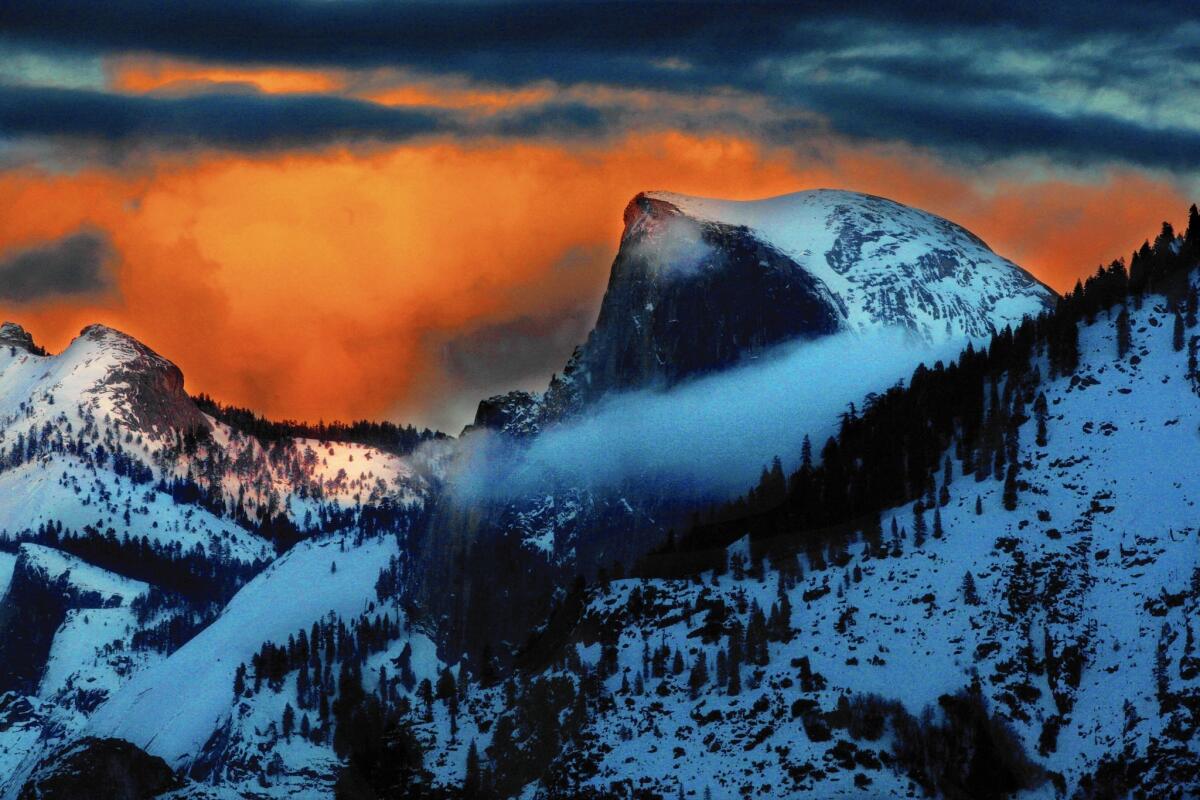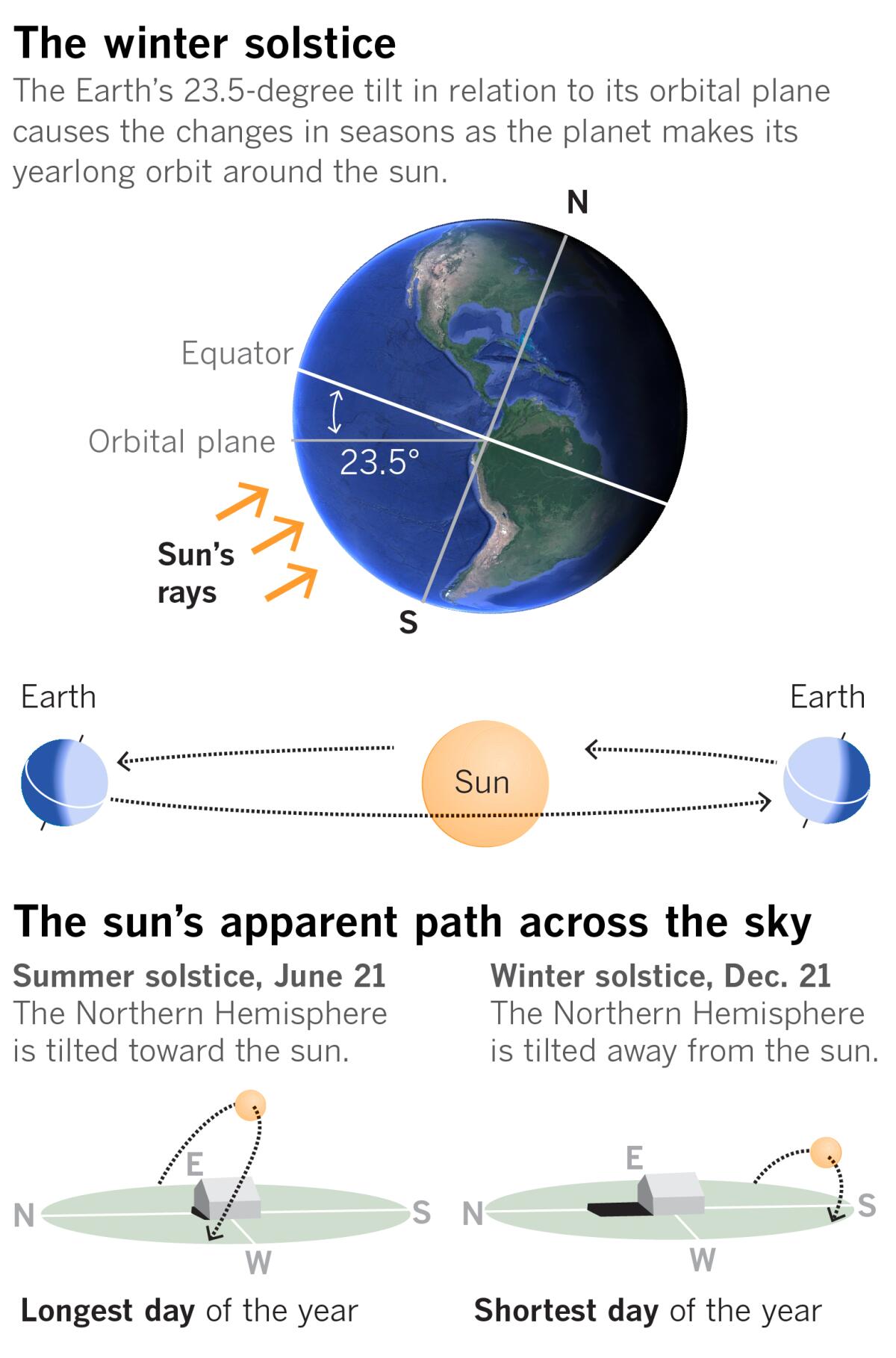What is the winter solstice?

- Share via
The December solstice in the Northern Hemisphere occurs when the North Pole reaches its maximum tilt away from the sun, causing the shortest period of daylight and the longest night of the year. In about six months, as Earth travels on its yearlong journey around the sun, the Northern Hemisphere will be tilted toward the sun, and the Southern Hemisphere will reach its maximum tilt away from the sun. The seasons are caused by the fact that Earth is tilted on its axis by 23.5 degrees.
The winter solstice is regarded as the beginning of winter, but from this point the days begin to lengthen. Still, the coldest part of the winter lags behind the solstice, usually coming in January and February. That’s because Earth is constantly losing heat, and more heat is leaving the reservoir in the Northern Hemisphere’s mid- and high latitudes than is being added to it. In the same way, the warmest days of the year lag behind the summer solstice, much as the hottest part of a summer day occurs several hours after the sun is at its noonday high point.

More to Read
Sign up for Essential California
The most important California stories and recommendations in your inbox every morning.
You may occasionally receive promotional content from the Los Angeles Times.











